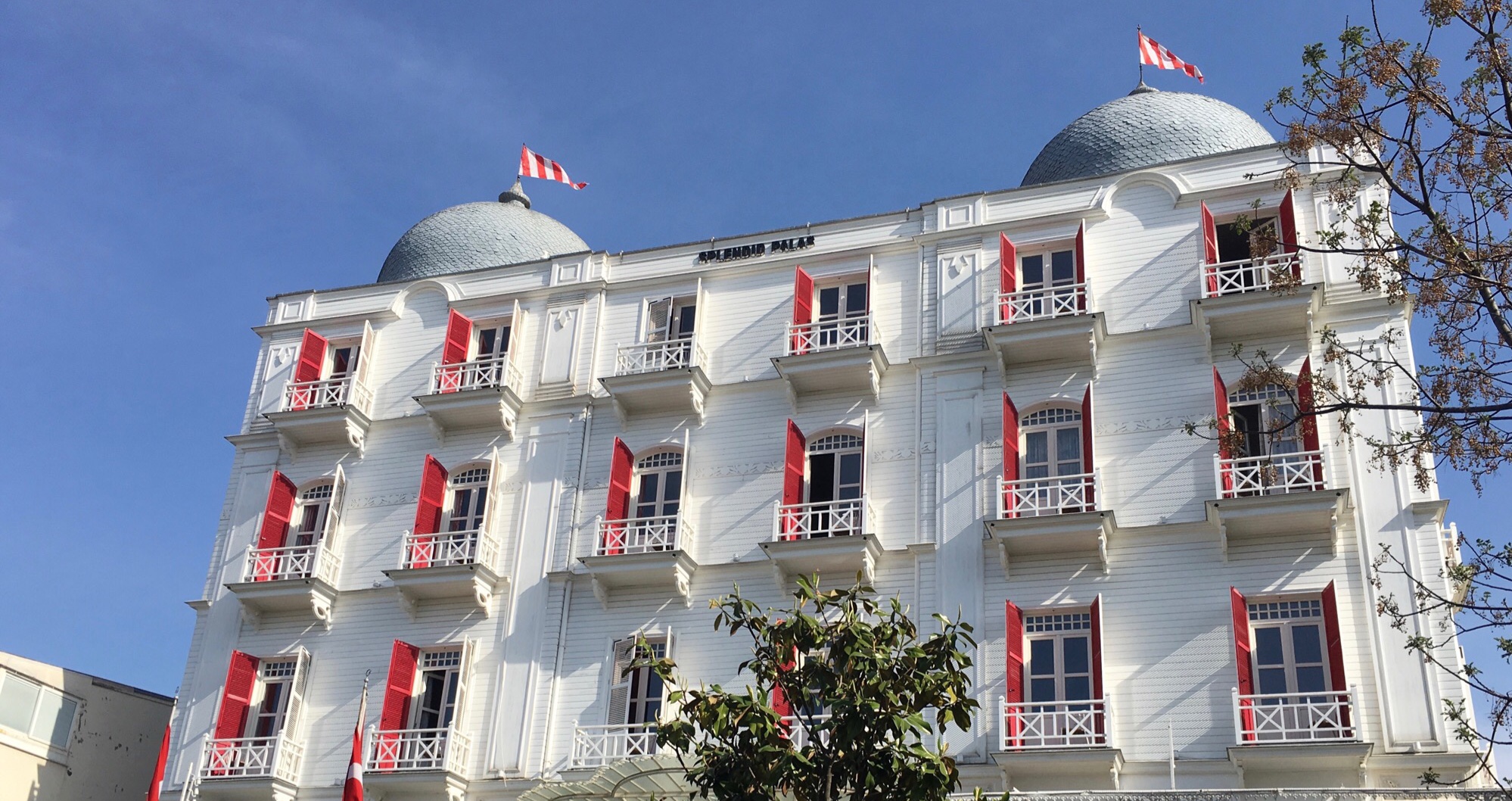Istanbul is certainly a city that fills you with nostalgia. The clues of a less populated and less tarnished city are all over Istanbul for eyes that can see them. Even though we Istanbulites love our city no matter what, we still have a longing for those times of a different elegance and untouched beauty.
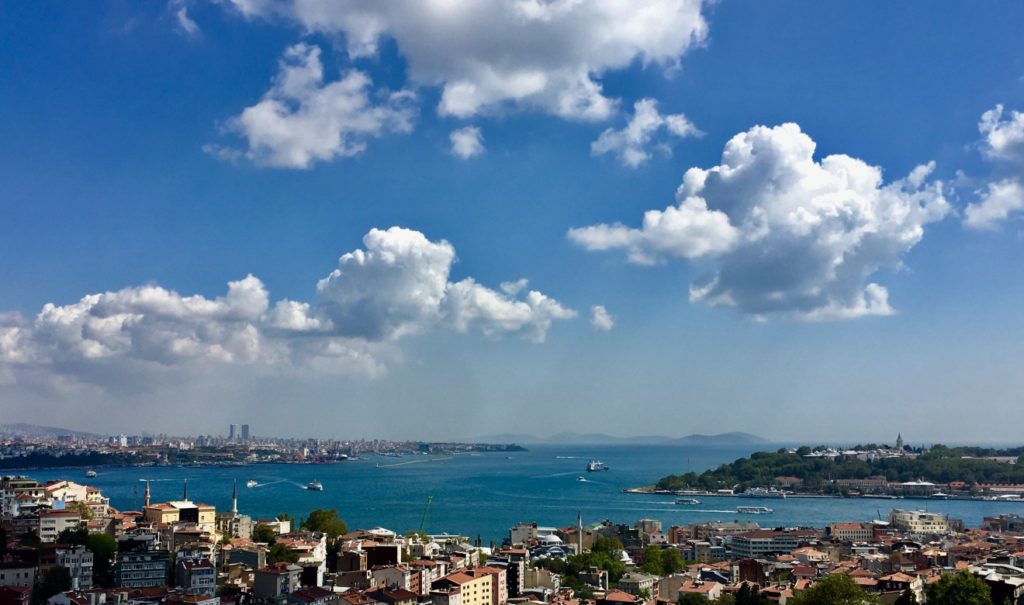
The population of Istanbul was less than 3 million in 1980. Today, with more than 15 million inhabitants, it is more populated than some countries like Belgium, Greece, Portugal and Sweden. It can easily be said that certain parts of Istanbul have almost become cities of their own. So much so that, you can say there are numerous ‘Istanbuls’ in this city. In fact, discussions that flare up from time to time on whether the city should administratively be divided into two (the parts on the European and Asian sides), are not uncommon.
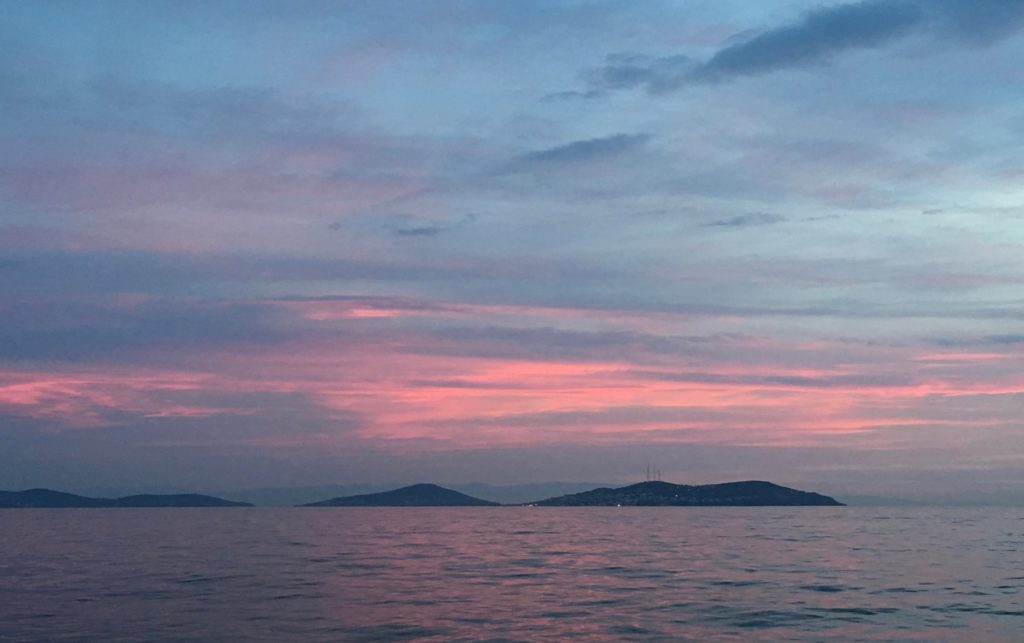
Incorrect policies that led to fast industrialisation in and around Istanbul, eventually caused a high flow of migration from rural areas all over Turkey. The city was unable to absorb this population flood properly and it became the victim of wrong urbanisation, ruining some of the historical and natural beauties of Istanbul. Nevertheless, Istanbul is still holding on, continuing to fascinate locals and visitors alike.
Until 30 to 35 years ago, the districts on the Asian side of Istanbul, together with the islands, were mostly like summer resorts. During winter, well off families of the city would be living in districts such as Nişantaşı, Şişli and Harbiye on the European side. In summer, they would move to summer houses on the Asian side, mostly close to the shore of the Marmara Sea, on the islands or along the Bosphorus. They would repeat this seasonal migration every year. Some districts on the European side, such as Florya and Yeşilköy were also favourite summer destinations with their beaches. This tradition which went back to the 19th century, no longer exists in Istanbul. Most of the wooden summer mansions and other more modest summer houses have been turned into blocks of apartments in which people reside in all around the year. The islands, which are less spoilt, are perhaps the only exception in this respect. Although the major ones have a small size of permanent locals, they are mostly inhabited in the summer as a seaside resort.
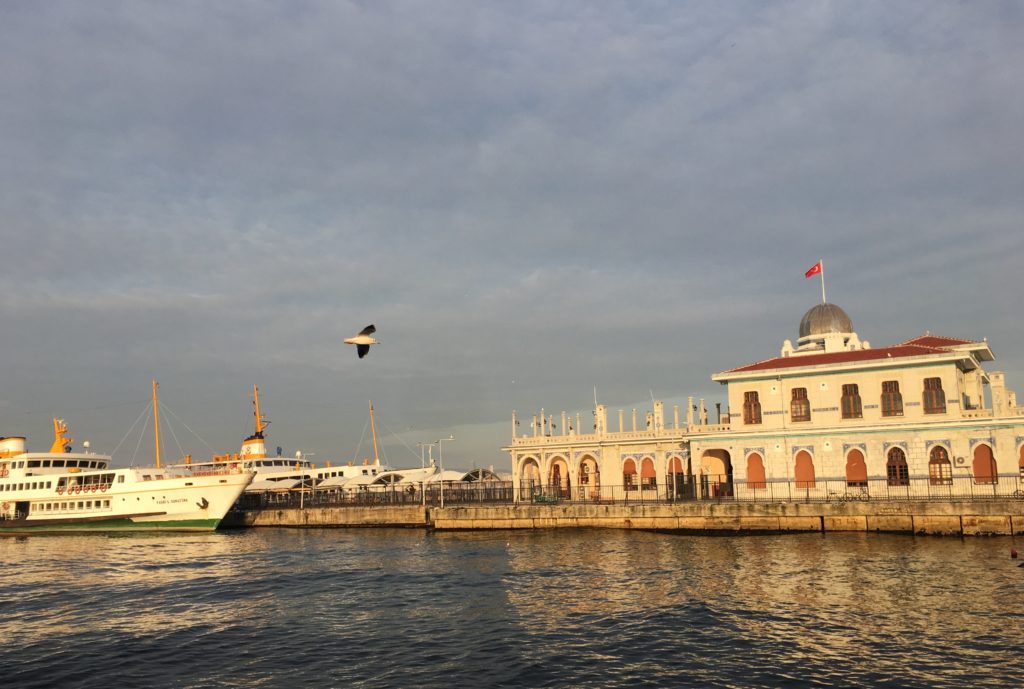
The archipelago of Istanbul in the Marmara Sea consists of nine islands out of which five are inhabited. Named as Princes’ Islands or simply as The Islands by Istanbulites, they are quite easily accessible by vessels of various sizes. If you are living or staying on the Asian side like I do, in summer evenings you can always take a half hour ferry ride for a nice dinner at one of the many fish restaurants. It takes longer (around or a little bit more than one hour depending on your point of embarkment) to get there from the Old City or the European side.
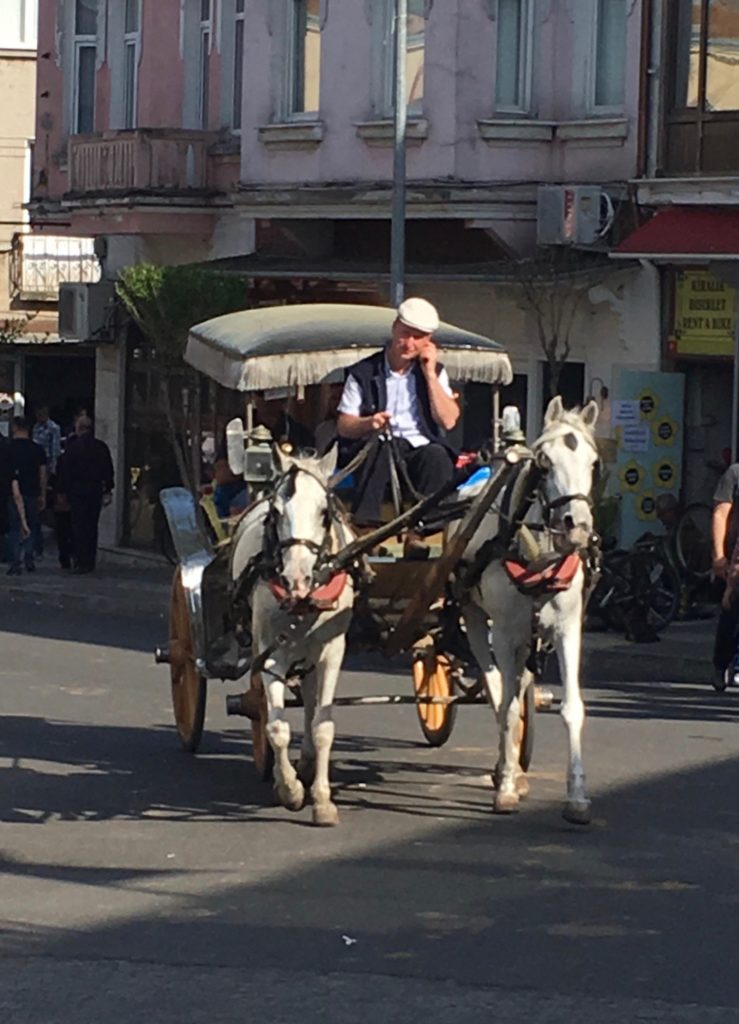
The atmosphere on the islands is quite different than the hubbub of Istanbul. This is not only because cars are not allowed, but also because of the natural environment, the mostly preserved beautiful wooden mansions from the 19th century, the churches and the monasteries on these islands. My favourite seasons to go the islands is usually spring and autumn when it is less crowded than in summer. If you must go on a summer day, at least try to avoid the week-ends when especially the two biggest islands, Büyükada (literally meaning big island in Turkish) and Heybeli (meaning saddlebag in Turkish because of the shape of the island) are packed to the brim. I personally love the third biggest one, Burgaz, which is always more tranquil and less crowded but, I will write about that one later on.
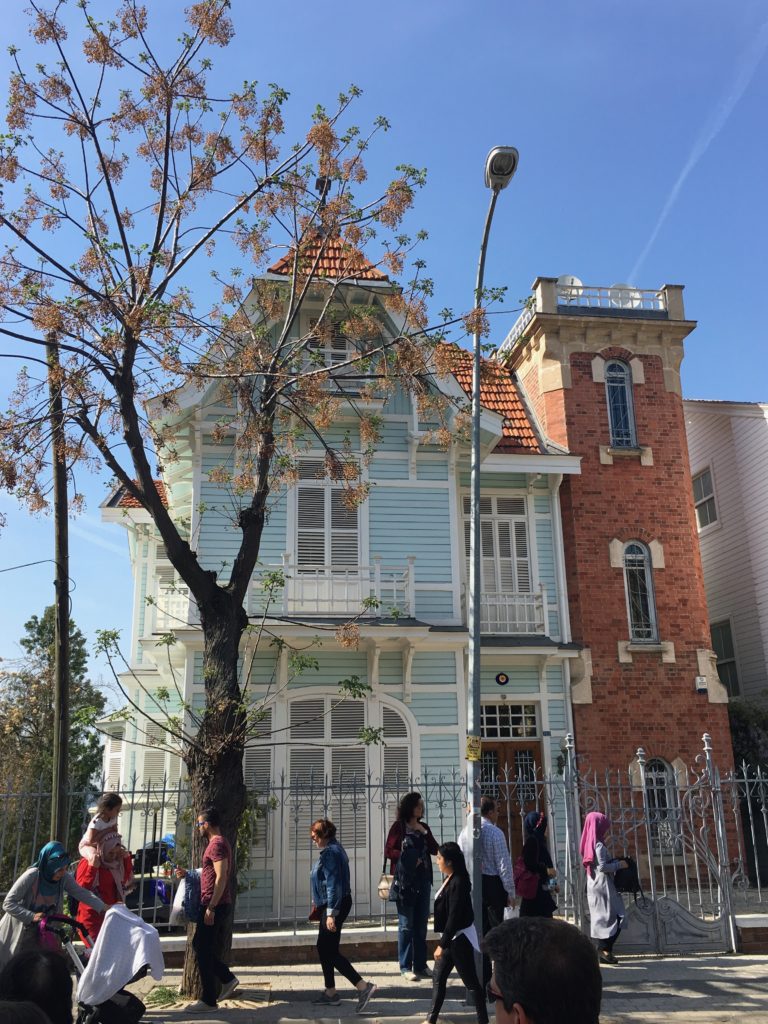
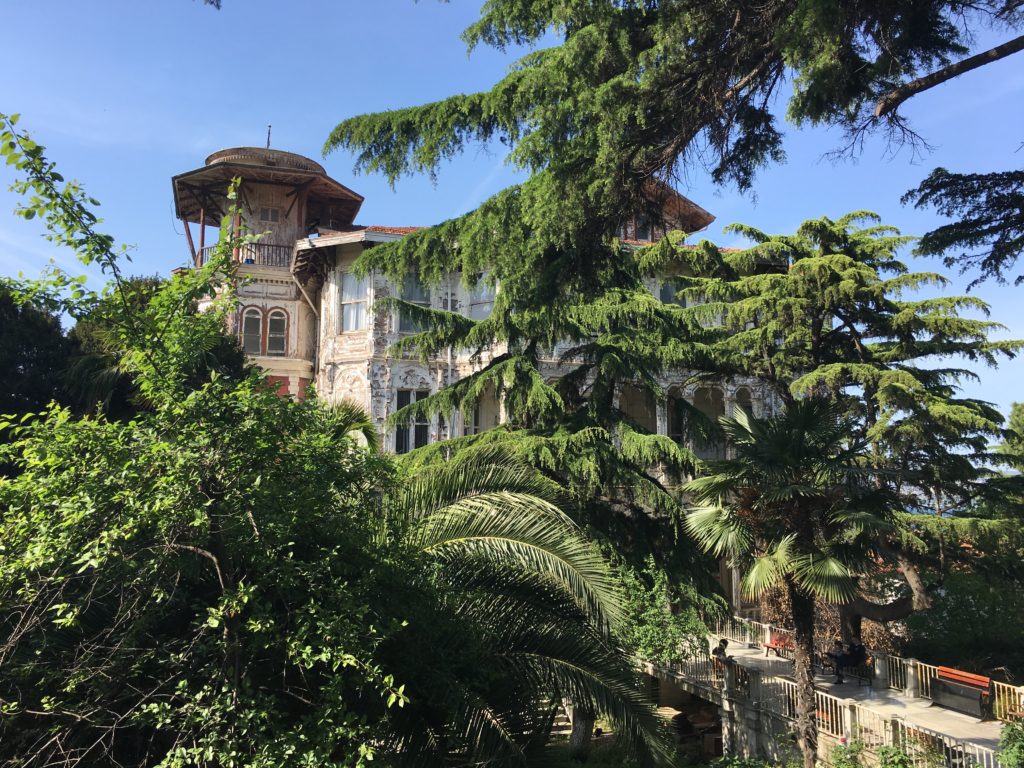
I do not know about other people but, every time I go to the islands in Istanbul, I know I am in search of a long-gone era of finesse and beauty. The elegance and lifestyle that is lost not just in Istanbul but in most major cities of the world. Even so, the relaxing atmosphere on the islands, while still being only a short distance away from the big city, has always been refreshing for me.
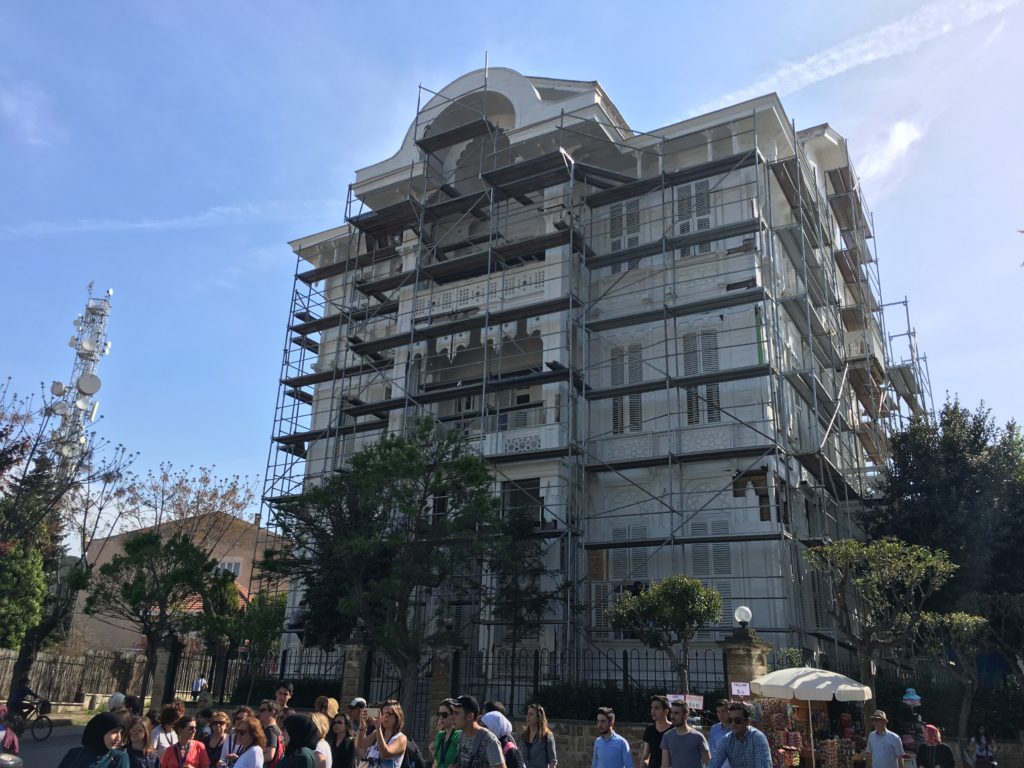
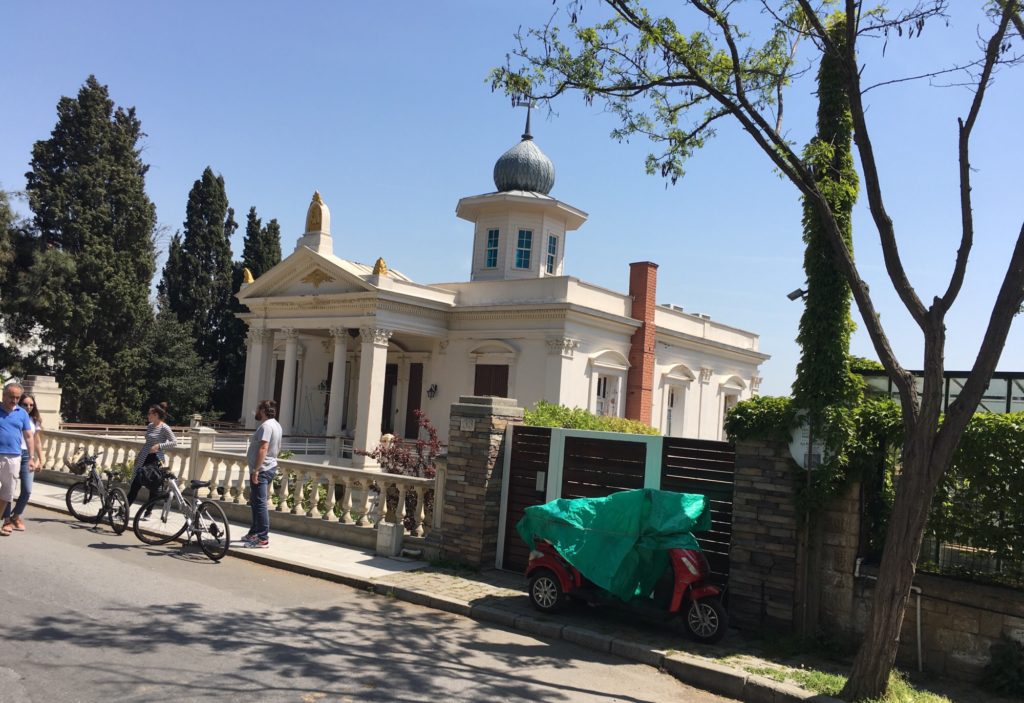
This past New Year’s Eve, we decided to stay at an historical hotel on Büyükada. We took a small boat from Bostancı on the Asian side. I had been worried about the weather for the previous few days. We were lucky. It was a cold but clear day. No snow or fog. The boat was quite crowded with some people who were going to stay at a hotel like us and others who were heading for their summer houses. All with the anticipation of a pleasant New Year’s Eve…
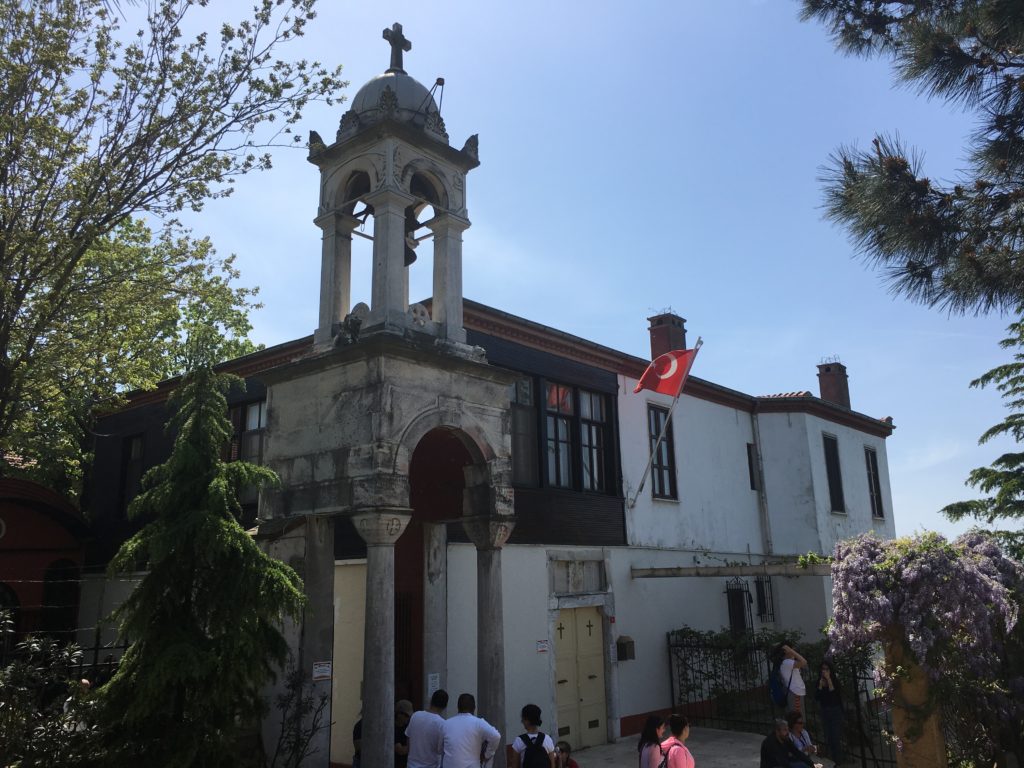
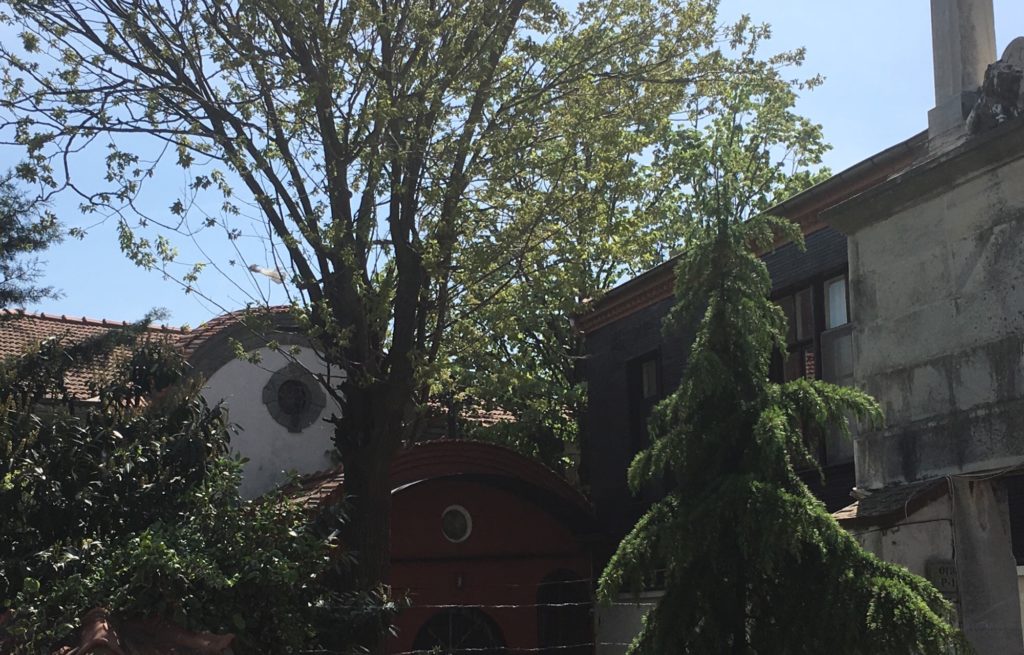
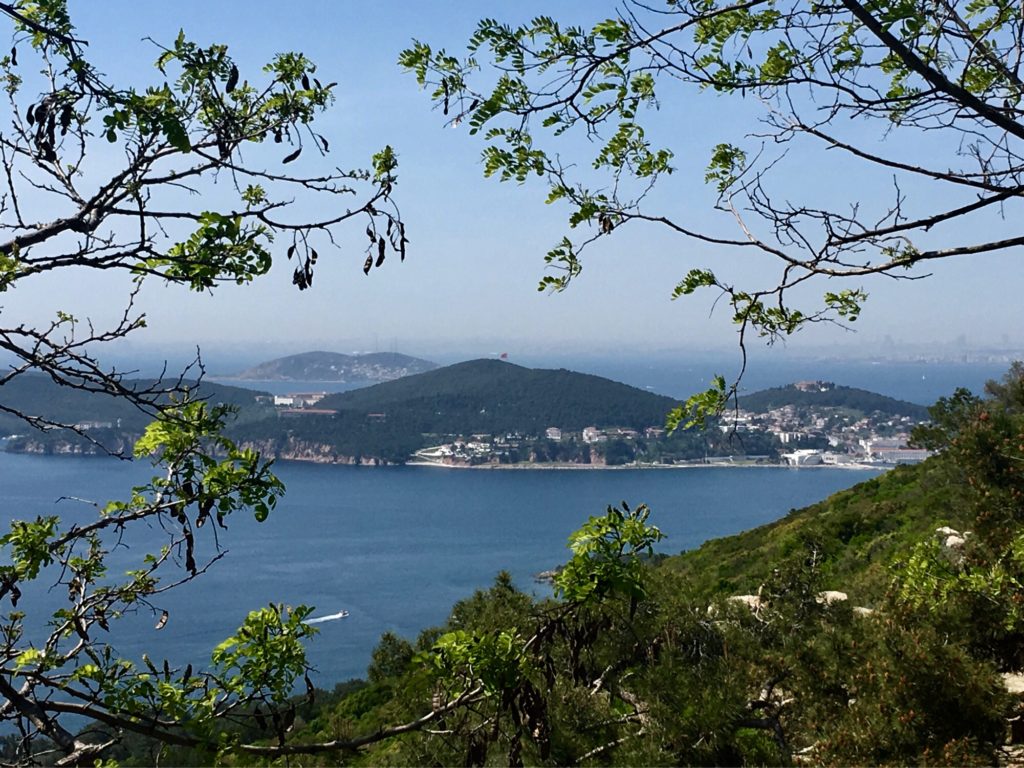
Little is known about Büyükada during the early stages of history. Named Prinkipo during the Byzantine era, it became a destination of exile as soon as the East Roman Emperor Constantinus I (Constantine the Great) declared Constantinopolis (name of Istanbul at the time) as the capital of the empire. Any religious or political opponent, siblings or sons who were expected to become threats, Princes and relatives were sent in exile to Büyükada and the neighbouring islands. Just like in Capri in Italy, here the lucky ones lived a long life of solitude while the less lucky were left to die under torture and misery.
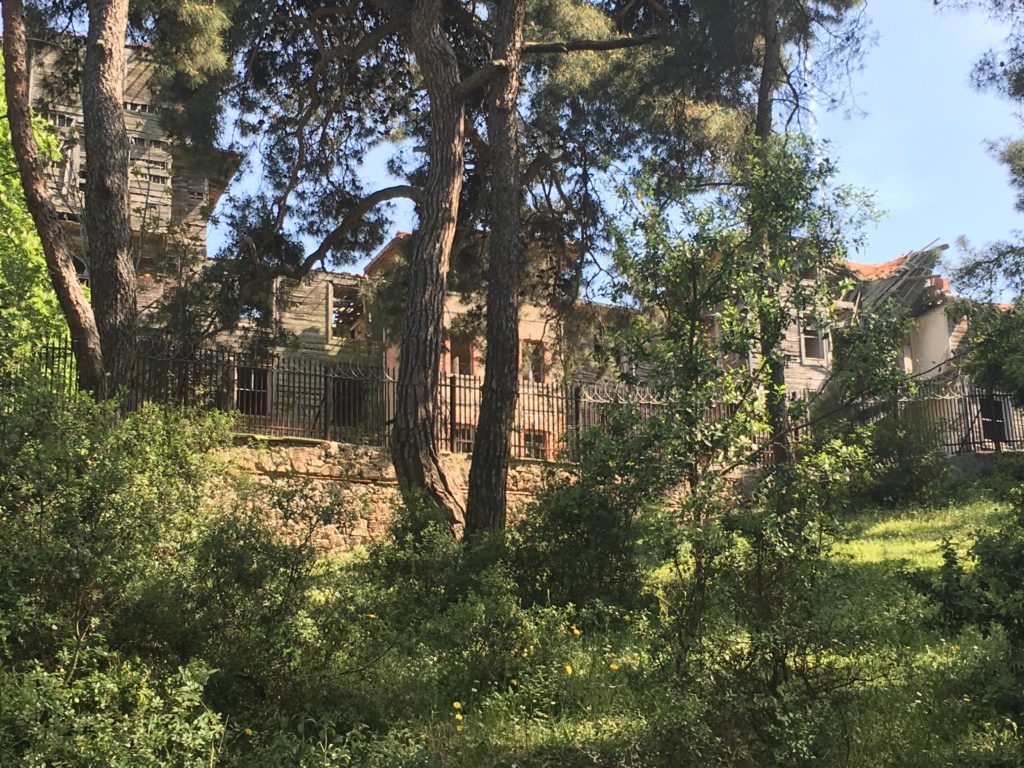
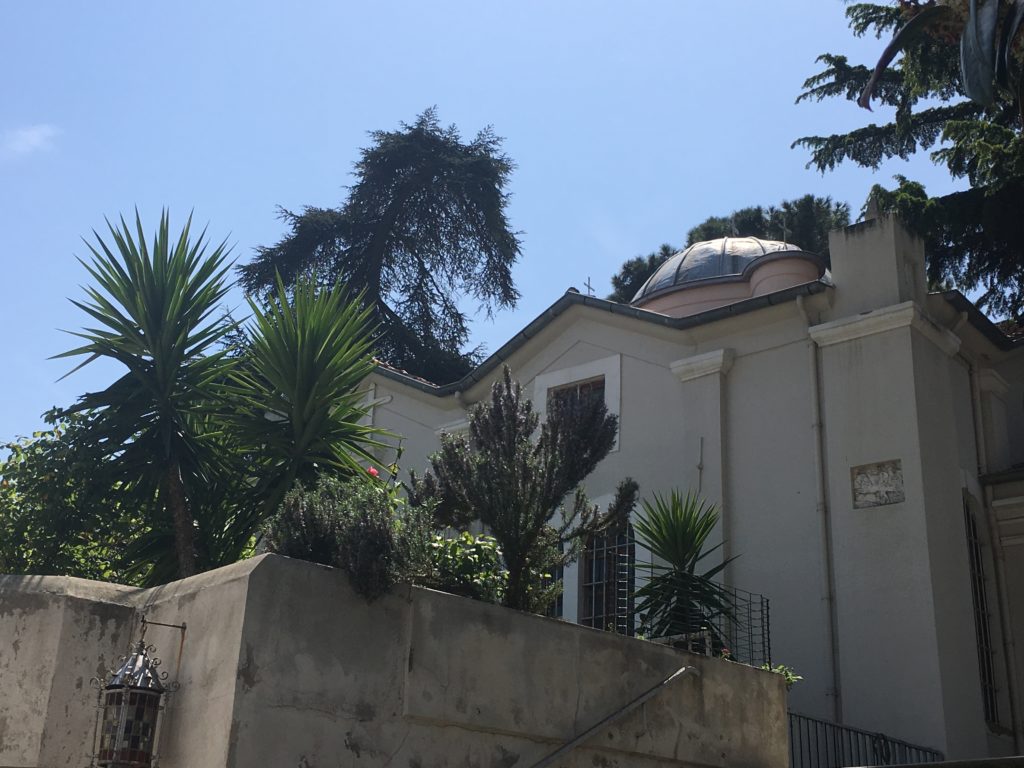
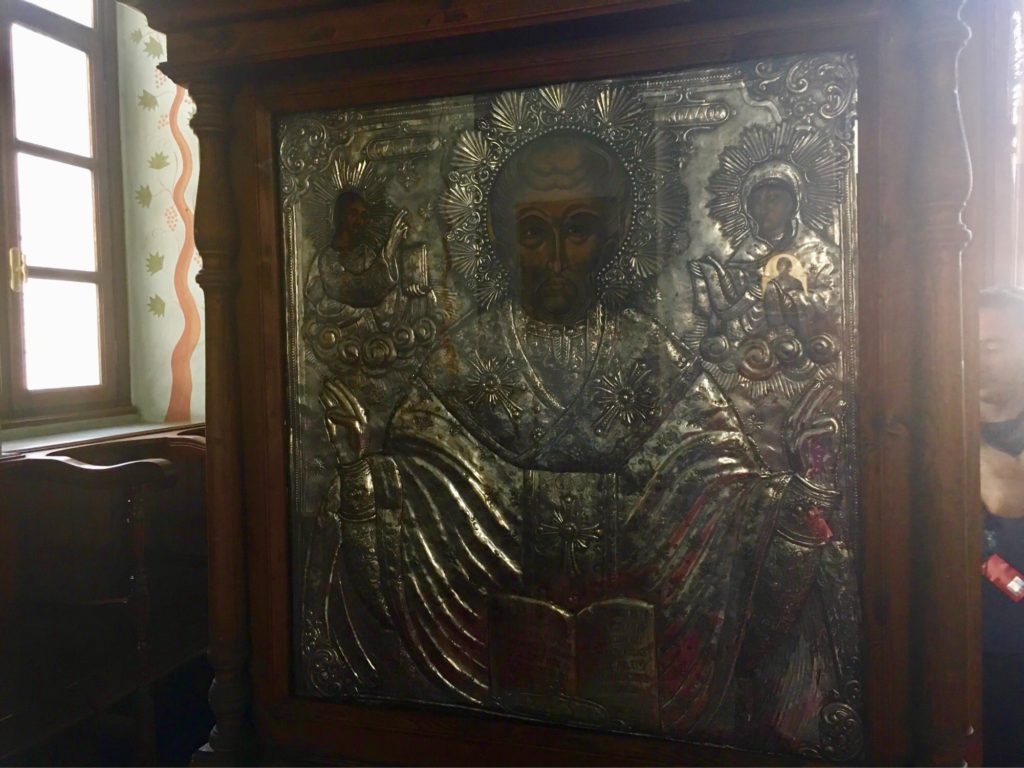
The island became a religious destination of seclusion when several monasteries were built in time. It is also known that a palace and a castle were built here in the second half of the sixth century. Unfortunately, none of these remain. The island was conquered by the Ottomans shortly before the conquest of Istanbul. Some historians state that Büyükada or Prinkipo resisted the siege longer than the surrounding islands were able to. Migration to the mainland followed the fall of the island until the 16th century, when the population of Prinkipo started to increase again. The majority of the inhabitants of Büyükada were always Greeks. Muslim Turks started coming to the island in the middle of the 19th century. This increased with the start of regular ferry services in 1846. By the end of the 19th and the beginning of the 20th century, Büyükada became a summer destination for Muslim and non-Muslim rich families. The restaurants and clubs, in addition to the wine which was the special produce of the vineyards of the island created a Western atmosphere of luxury and savoir-vivre. On the other hand, Büyükada continued to be a place of exile. Politicians, artists and writers were sometimes sent here in exile by the Sultan. The Russian revolutionary Leon Trotsky also stayed here for a while in 1929 before he went to Mexico where he was assassinated in 1940, by the order of Stalin. Nowadays, it is said that the Turkish Nobel laureate in literature (2006) Orhan Pamuk has also been living in Büyükada for some time.
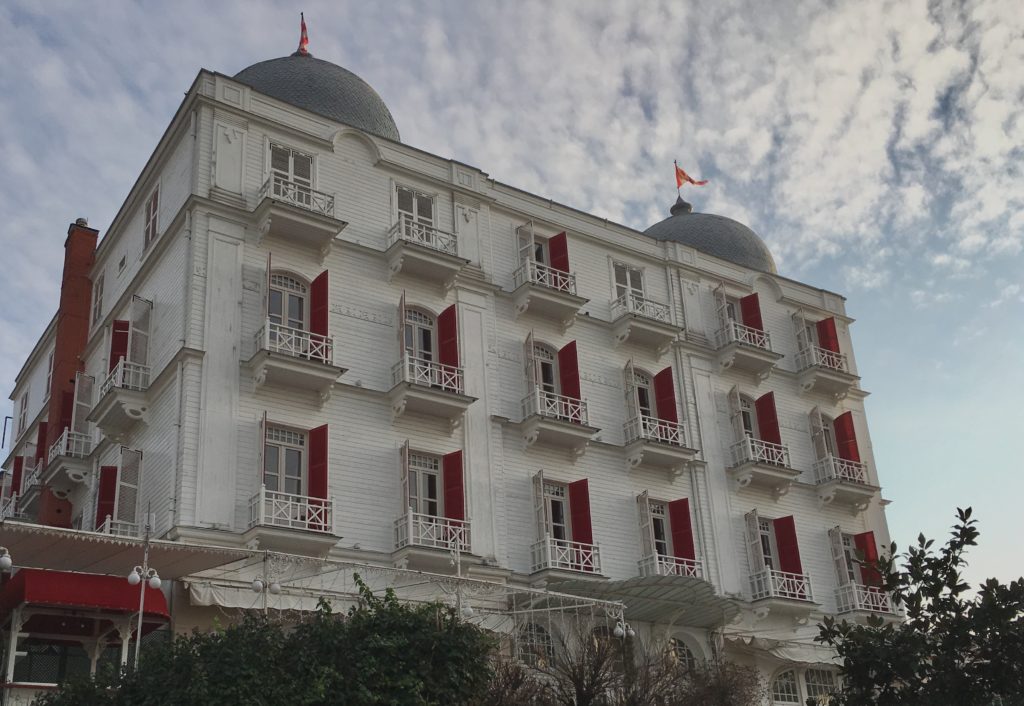
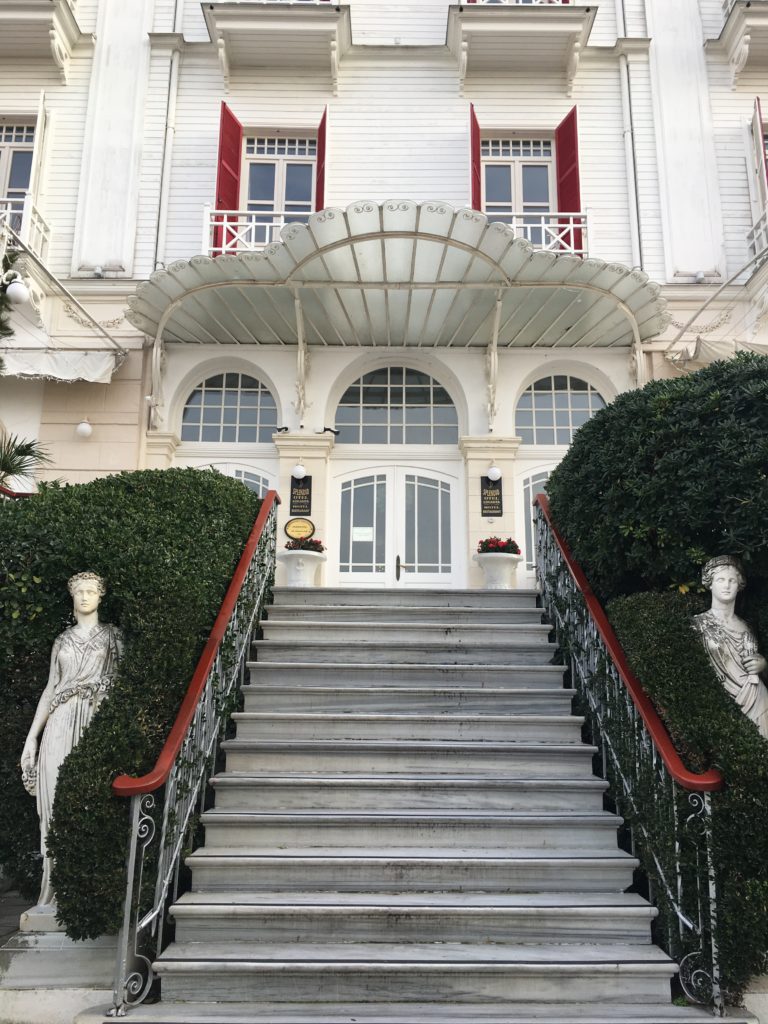
The Splendid Palas Hotel is not far away from the pier of Büyükada. In fact, you can see the imposing four-storeyed, white wooden building with its red shutters and two big domes on the rooftop from quite far away, as you approach the island. If you want a horse carriage ride, you can save it for a longer ride around the island because, the hotel is only a short distance up the hill. This 110 year old hotel is run by the sixth generation of the family and the moment you step into the garden, climb the stairs that lead to the wide terrace and walk in through the door, you can imagine the elegant men and women who once stayed here, who sipped their champagnes at the bar and danced till the early hours of the following morning. The sound of your footsteps on the parquet floors, the reception desk, the old lift that takes you up to your room are all reminiscences of times long gone…
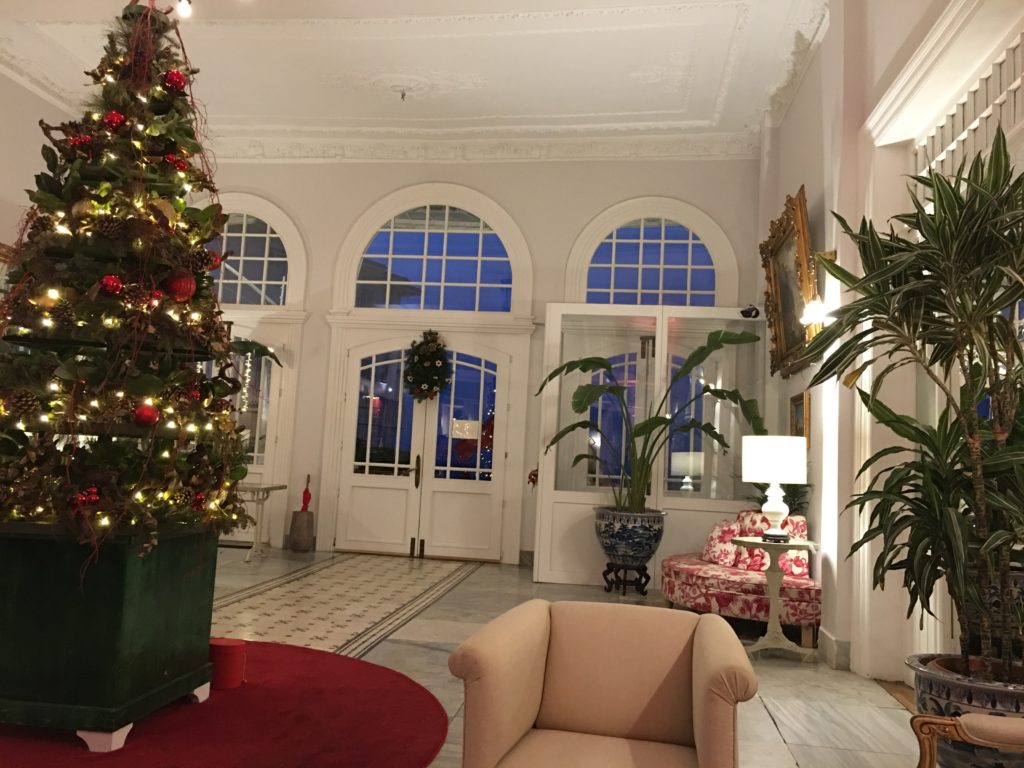
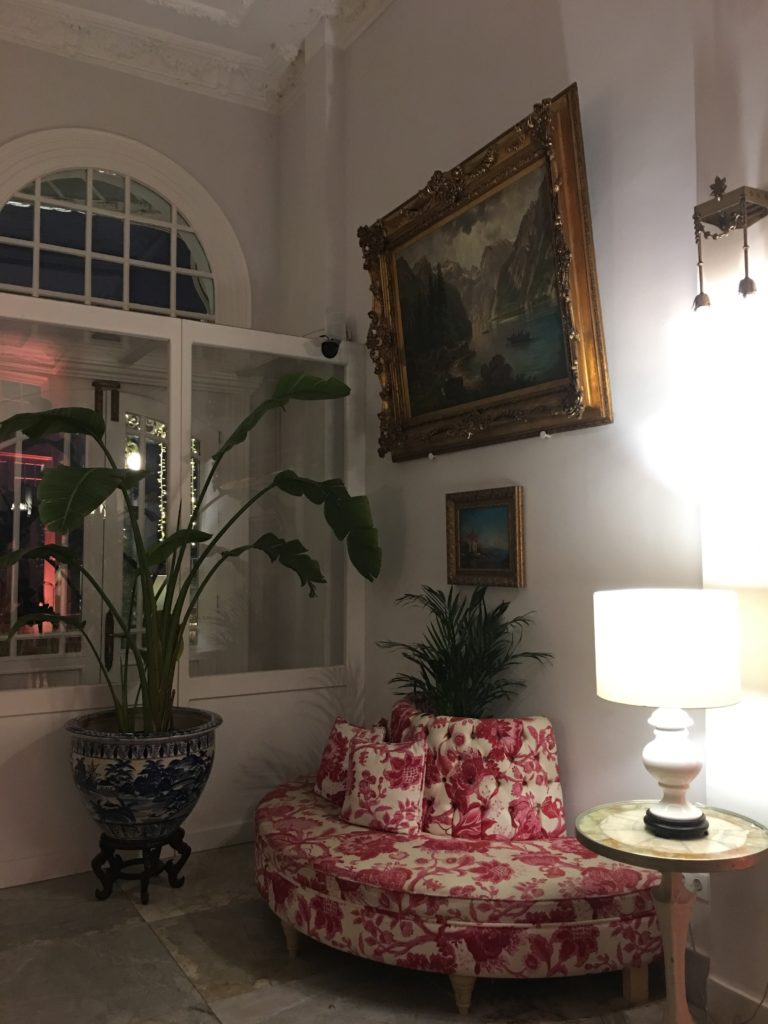
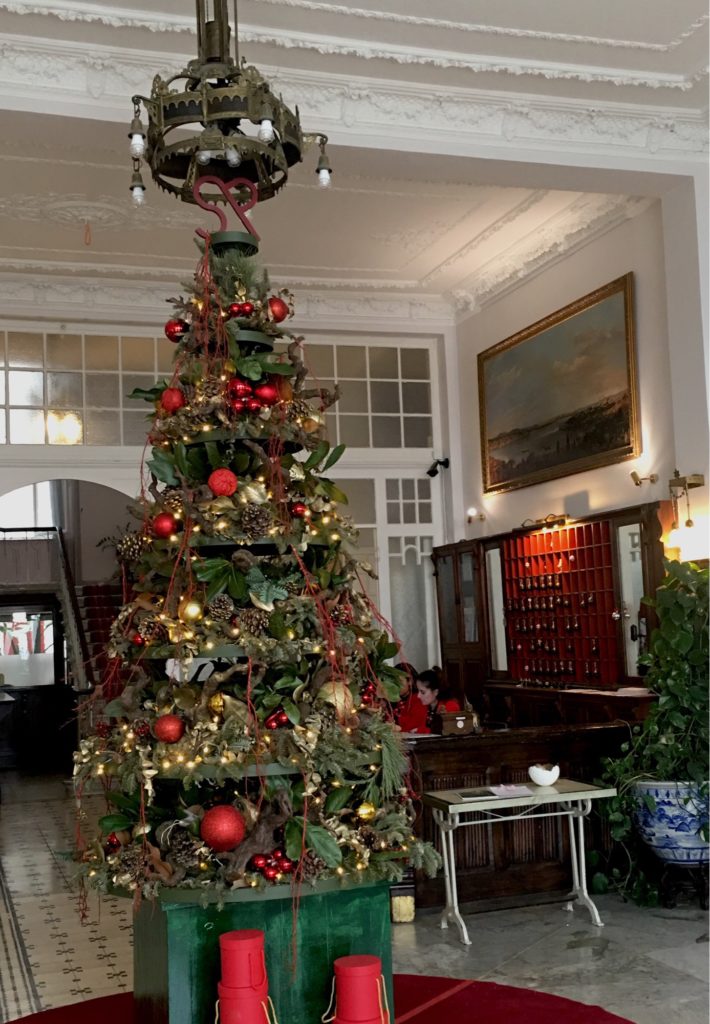
Today, it seems, the hotel still has a loyal group of customers who in summer come here for the swimming pool and the beaches of the island. In winter, there are various activities going on like art or cooking workshops. Even if you are not staying here, you can always drop in for a drink on the terrace or at the bar when you take a daily trip to Büyükada. Judging from the quality of their pastries and cakes, five o’clock tea would also be a great idea.
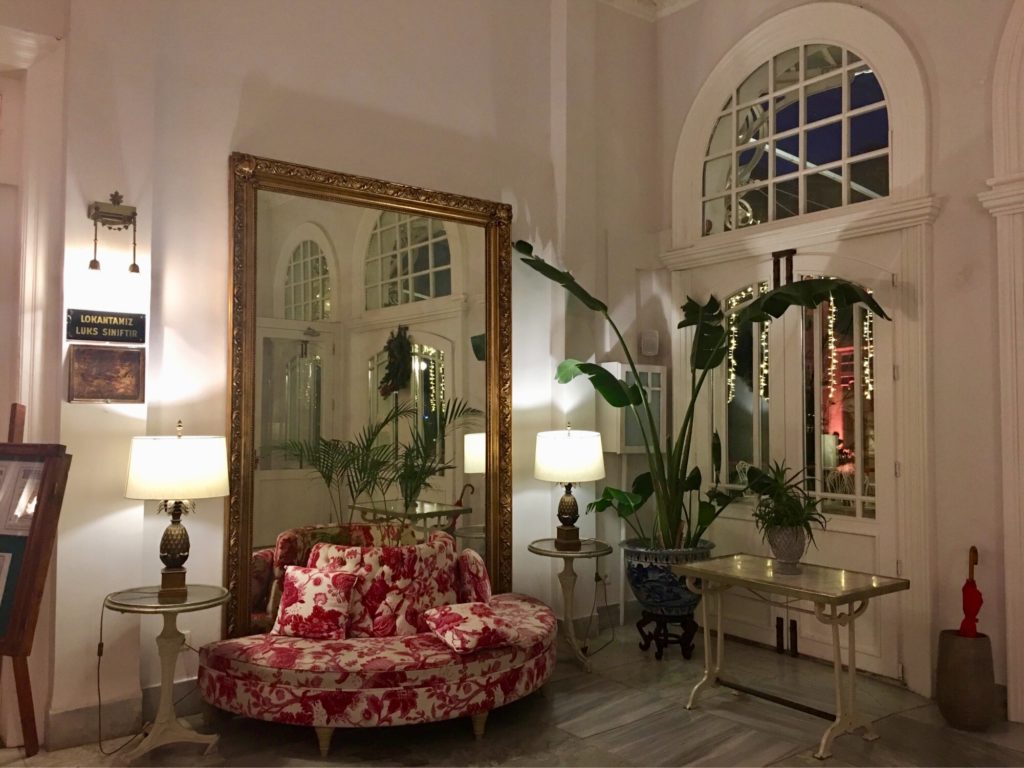
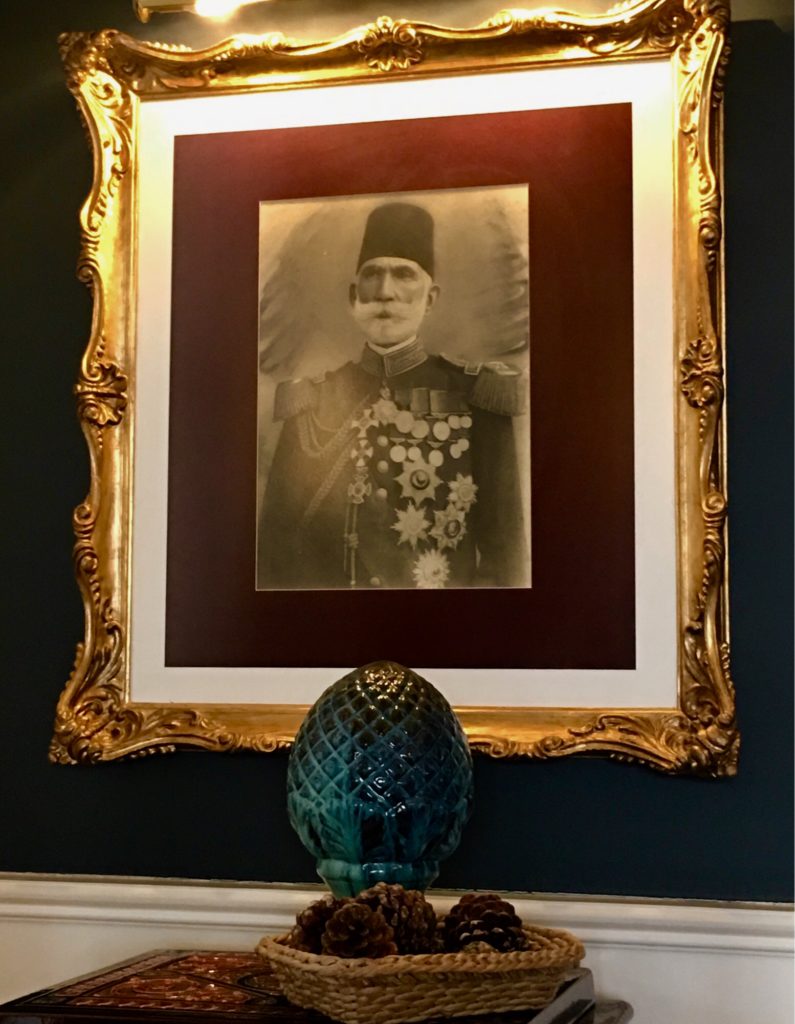
The Splendid Palas Hotel opened its doors in 1909 when Kazım Pasha, who was a high rank military man in the Ottoman army, retired and had a hotel built on the land he had bought previously. Kazım Pasha was originally from the island of Sakız (now the Greek island Chios) and was a marshal. He was known by the name Marshal Kazım Pasha of Chios (Sakızlı Mareşal Kazım Paşa) and was renowned for his bravery during the siege of Plevna (in today’s Bulgaria) in the Russian-Turkish War (1877-1878). Being greatly impressed by the hotels he saw in Europe at the time, he decided to have a hotel built on the grounds of the Giacomo Hotel that was previously burnt down. Two statues from this hotel are on both sides of the stairs going up to the entrance of the building from the garden.
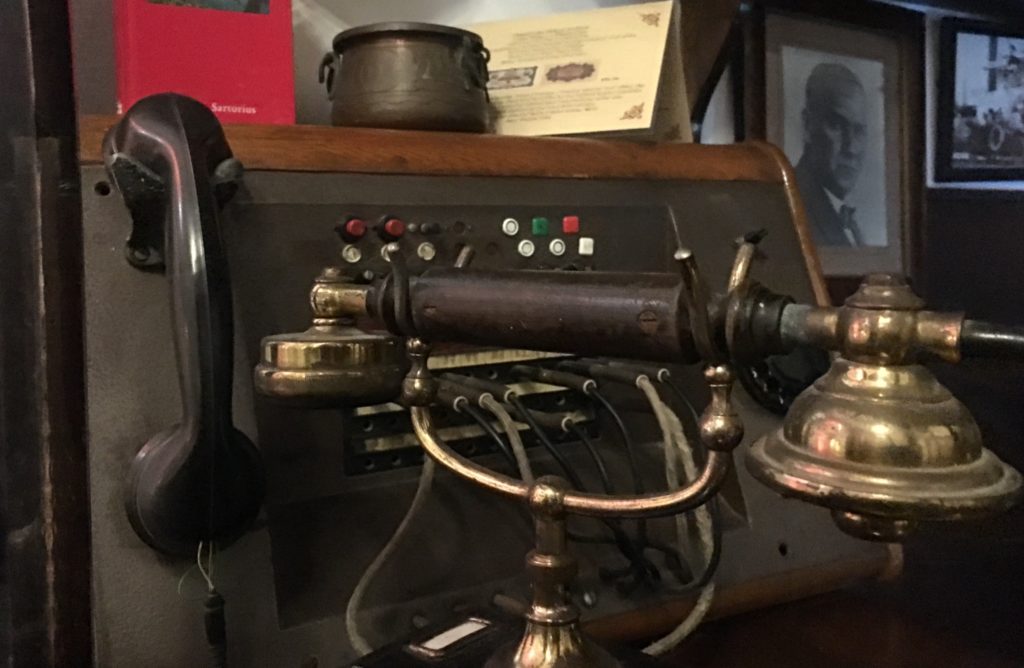
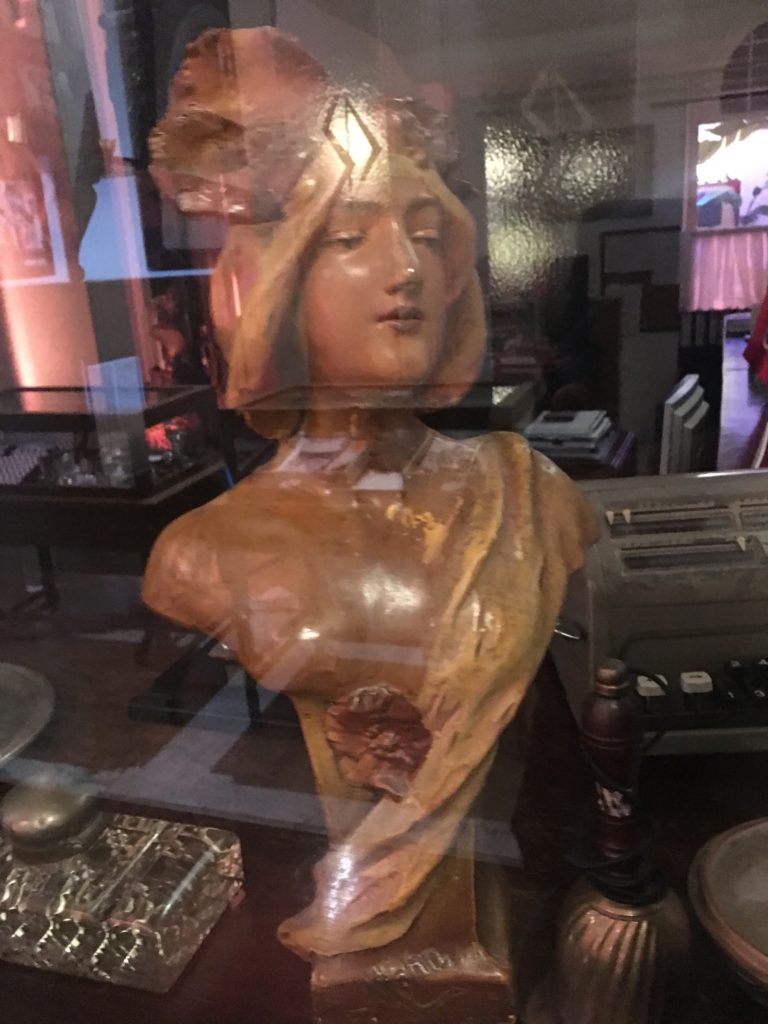
The Splendid Palas Hotel became the centre of attraction for those who enjoyed a luxurious environment, good food and music from the very beginning. Chamber orchestras and jazz bands were always a part of the hospitality here.
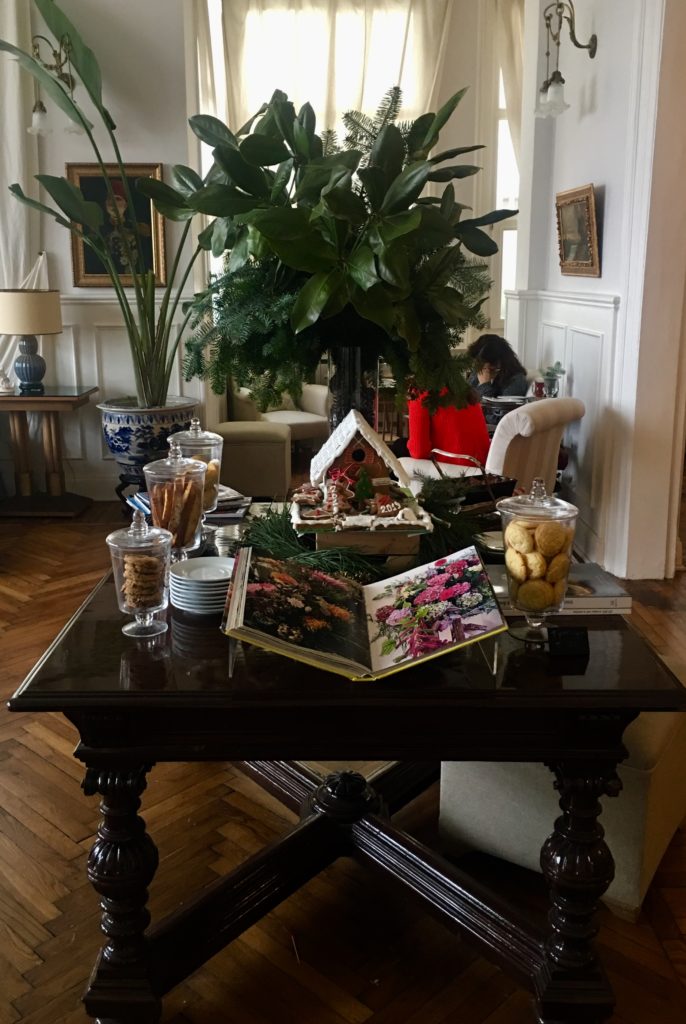
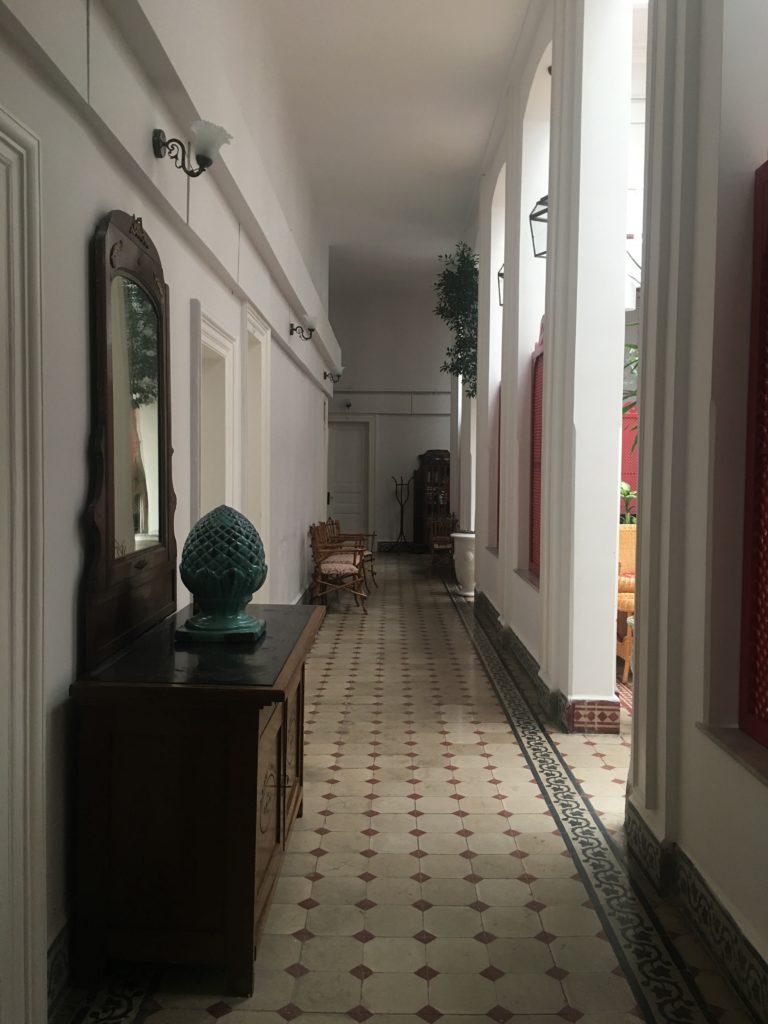
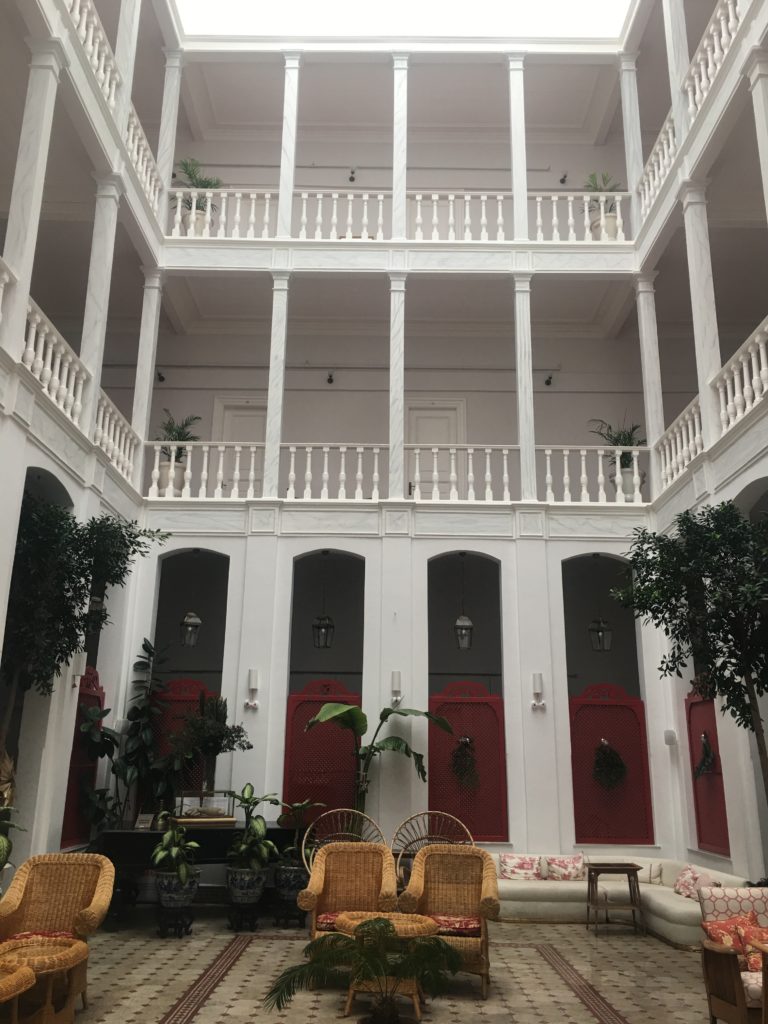
However, the hotel also had some bad times like during the Balkan War (1912) when it was turned into a hospital for soldiers. Occupation years of Istanbul, after World War I, was another difficult period for Splendid. During this time, the hotel was obliged by the British occupation forces to host Russian soldiers and their families for eight or nine months. Glamorous days returned after the end of the occupation in 1923. Mustafa Kemal Atatürk, the founder of the Turkish Republic, visited Splendid Palas twice. The last time, in 1934, was for a ball.
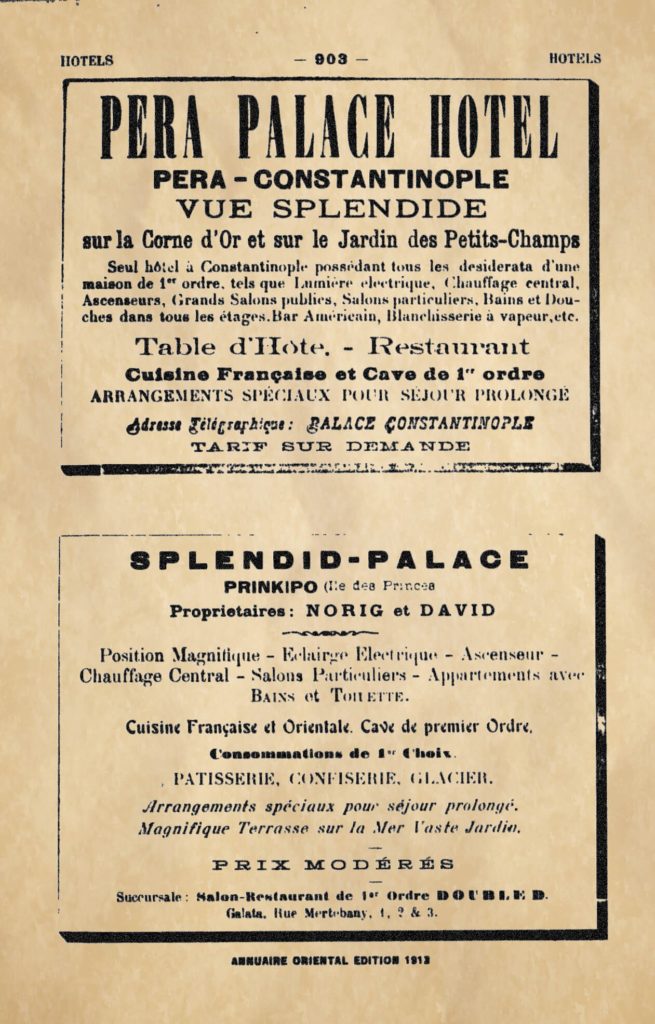
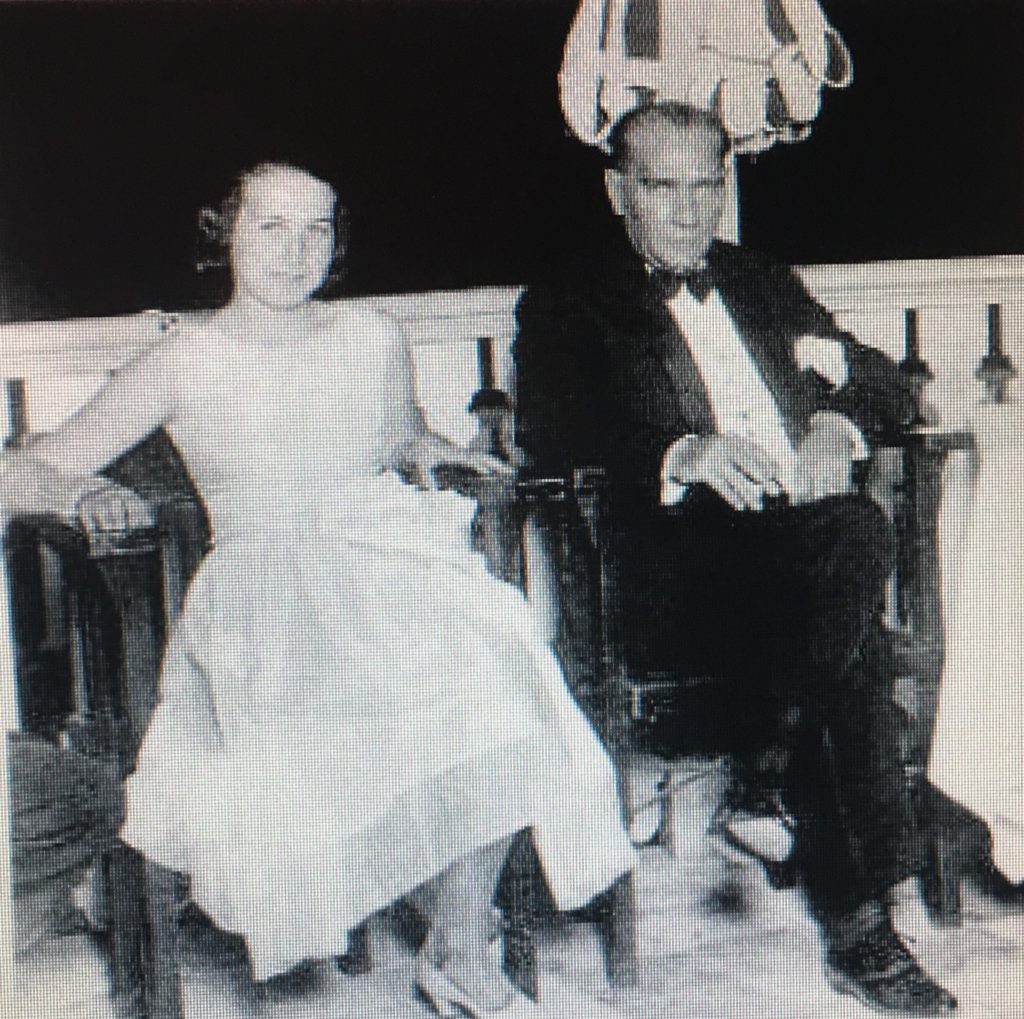
Source: www.splendidhotel.net
We were welcomed warmly at this historic hotel on New Year’s Eve. Food was exceptional. Everything we ate, including the welcome cookies we found in our room, the croutons and canapes at the cocktail and the dishes at dinner were exquisite. After dinner, there was a party at the bar. There wasn’t a live orchestra as there used to be in the old days but, nevertheless, the music was good. Armenian, Greek, Jewish and Turkish citizens of Istanbul, we danced till the wee hours of the morning, all in the hope of a better world in 2019…
